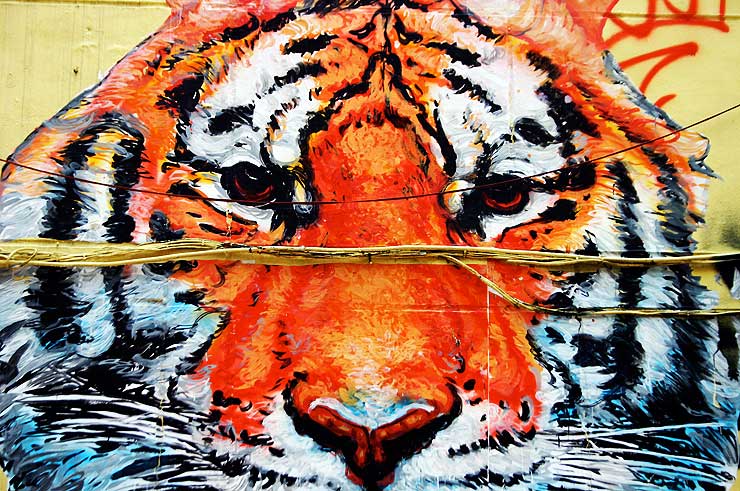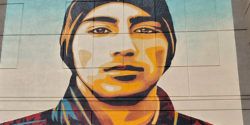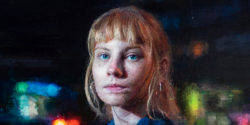Evangelicalism, Shamanism, Buddhism, Confucianism. Place together in a Hot Stone bowl and crack an egg on top. Stir.

New York Street Artist Gaia talks to BSA about his second in a series of street art pieces he is doing in Seoul, South Korea, which are combining religious and traditional cultural symbols in ways not seen before.
BSA: What have you been learning about your host country that affects your street art?
Gaia: Korea is an amazing place to work in because it is so culturally rich and ripe with tradition and folklore. But furthermore, it has westernized at such an incredible pace that there is a deep schism between the traditional and the contemporary. That conflict makes for an exciting environment to make hybrid work, to explore these boundaries. For example, the tiger rabbit is the annual cycle but also the shift in identity from Korea’s representation as a rabbit under Japanese colonialism, to its assertion with the coming independence the peninsula of the tiger.
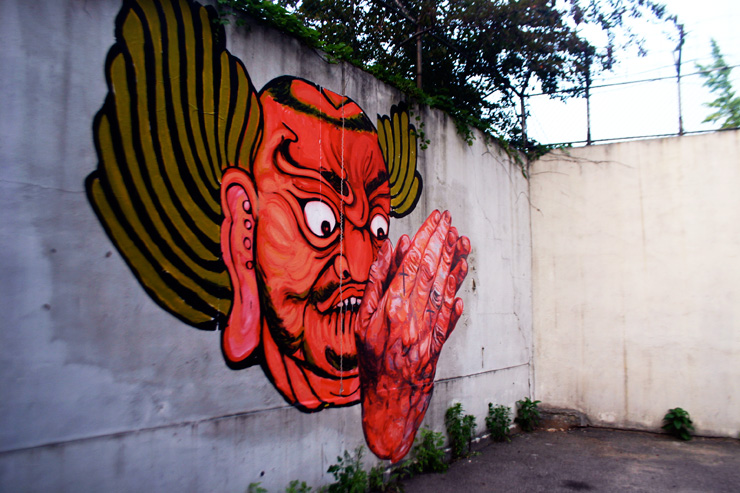
BSA: Who is the figure in the new piece you just completed?
Gaia: The piece is of a Buddhist monk image from the door of a small temple in the mountains that I was visiting for field research. With the wave of (Christian) evangelicalism that has arrived with the western wash that is suffusing Korea right now, I thought it would be pertinent to hybridize/subvert the old tradition with the new influence. Shamanism and Buddhism were expelled from the city of Seoul when the Joseon Dynasty adopted Confucianism.
BSA: This looks like Buddist imagery combined with your classical hands from earlier pieces.
Gaia: The Image of buddhism has returned to the the walls of the palace just a block away from the gate of Gyeongbokgung, the time by the hands of a westerner, and contrasted with praying hands inscribed with the symbols of St Andrew; A portrait of passing times.
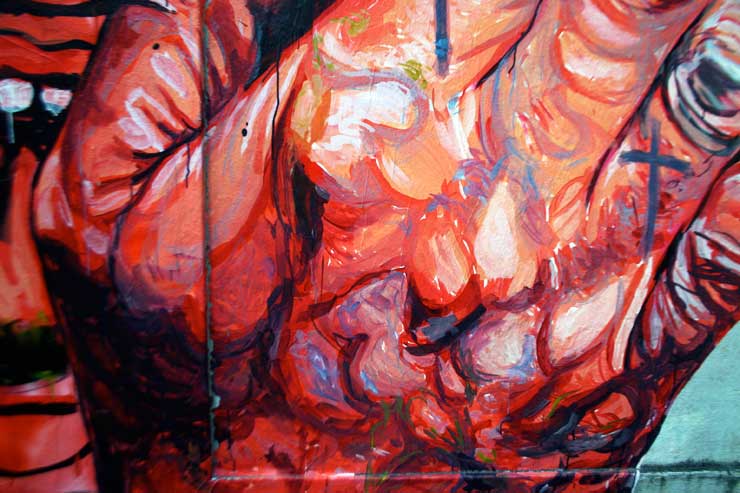
BSA: Do you have any new favorite foods?
Gaia: My new favorite foods are bibimbop (duh nam june paik), boolgogi, and the ultimate being Naengmyeon.
 BROOKLYN STREET ART LOVES YOU MORE EVERY DAY
BROOKLYN STREET ART LOVES YOU MORE EVERY DAY